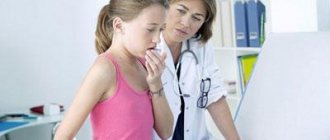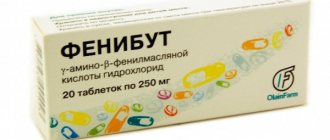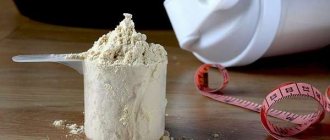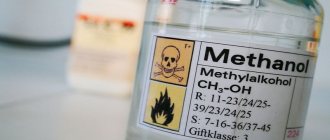Mistake No. 2. “Every other time”
The medicine is running out, and there are still 2-3 days until salary or pension. And you begin to save the drug that is running out, taking it “every once in a while.” But for most medications taken on an ongoing basis, a stable therapeutic concentration of the active substance in the blood is extremely important. This applies primarily to drugs that control normal blood pressure and those that are responsible for reducing high blood pressure; oral contraceptives and other hormonal drugs; antibiotics; antifungal agents. An imbalance of the drug in the body's blood, especially if it occurs regularly, will lead to microorganisms becoming resistant to the drug - they are, as it were, hardened on low doses of the substance, plus the risk of heart attacks and other problems sharply increases.
Everything you need to know about antibiotics. Infographics Read more
Means regulating metabolic processes
+>Metabolism section map.
Hormones, their analogues and antihormonal drugs
Hormones are biologically active substances that regulate metabolic processes in the body, the functional state of systems and organs. Pharmacological groups of drugs: anabolics, pituitary and hypothalamic hormones, adrenal hormones, pancreatic hormones, sex hormone drugs, thyroid and parathyroid gland drugs and eicosanoids
+>Map of the section Hormonal drugs.
Vitamins and their analogues
Vitamins are biologically active low-molecular organic compounds necessary for the normal development of the body. They take part in the formation of enzymes, regulation of metabolic processes and functions of various systems and organs. With avitaminosis (lack of vitamins in the body) or hypovitaminosis (lack of vitamins), various pathological conditions may arise that require the introduction of an appropriate vitamin or vitamin preparation from the outside. Various groups of vitamin preparations: vitamin-like preparations, water-soluble vitamins, fat-soluble vitamins and multivitamin preparations
+>Map of the Vitamins section.
Enzyme preparations and enzyme inhibitors
Enzyme preparations have found their use in the treatment of oncological diseases ( asparaginase ), diseases of the digestive system, diseases of the respiratory tract, in cases of blood clotting disorders, to accelerate the rejection of necrotic tissue after burns and frostbite, in orthopedic, traumatological, neurosurgical practice, etc. Various groups of enzyme preparations : enzyme inhibitors, for the treatment of purulent-necrotic processes, to improve digestion, various enzyme preparations.
+>Map of section Enzyme preparations.
Agents that affect hemostasis and stimulate erythropoiesis and leukopoiesis.
+>Map of the section Hemostasis, erythropoiesis and leukopoesis.
Amino acids
Amino acids are organic substances that contain one or more amino groups and are the main structural units for the synthesis of specific tissue proteins, enzymes, peptide hormones and other endogenous compounds and biologically active substances of living organisms.
Some amino acids (glutamic, gamma-aminobutyric, methionine, glycine, etc.) have found independent use as medicines.
+>Map of section Amino acids.
Plasma replacement solutions
Plasma replacement solutions are used for acute blood loss, shock of various origins, microcirculation disorders, intoxication and other hemodynamic changes. They cannot perform the function of blood, since they do not contain the formed elements of blood.
According to their functional properties and purpose, plasma-substituting solutions are divided into the following groups: hemodynamic ; detoxification ; means for correcting acid-base ionic balance ; preparations for parenteral nutrition .
+>Map of section Plasma replacement solutions.
Drugs for the prevention and treatment of osteoporosis. Drugs for the treatment of thyroid diseases.
+>Section map Drugs for the treatment of osteoporosis.
Biogenic stimulants and various biogenic agents
Biogenic stimulants are used to normalize dysfunctions of organs and tissues that have arisen as a result of mechanical damage, degenerative processes due to infections, intoxications, nervous strain, acute hypoxia and other traumatic agents.
Biogenic stimulants are designed to accelerate the processes of recovery and rehabilitation of the body. Many medications (anabolic agents, vitamins, etc.) have similar properties. In addition to reparative properties, these drugs also have antiseptic and anti-inflammatory effects.
+>Section map Biogenic stimulants and biogenic agents.
Drugs that stimulate the immune system
This group includes drugs that stimulate the processes of cellular and humoral immunity. Immunostimulants are used for infectious and infectious-inflammatory diseases, for sluggish regeneration processes (acute and chronic purulent and necrotic conditions, burn disease, severe injuries, trophic ulcers), after radiation or cytostatic therapy in cancer patients, for lymphocytic leukemia, lymphogranulomatosis, multiple sclerosis, psoriasis, etc.
Drugs with immunosuppressive effects (immunosuppressants)
A manifestation of a pathological hyperimmune reaction is an allergy , which occurs in the form of two types of reactions: immediate and delayed. In the development of immediate type allergies, damage to humoral immunity (the release of allergy mediators from basophils and mast cells that alter the functions of organs and tissues) is of primary importance. Clinically, this type of reaction is manifested by urticaria, Quincke's edema, hay fever, bronchial asthma, anaphylactic shock, etc. The drugs used for these conditions (cytostatics, glucocorticoid drugs, antilymphocyte serums, non-steroidal anti-inflammatory drugs, drugs for the basic therapy of collagenosis, etc.) inhibit immune cell reactions, lymphocyte proliferation, antibody synthesis, and also reduce tissue damage.
+>Section map Immune stimulants and Immunosuppressors.
Treatment of infectious, parasitic and viral diseases
Treatment of infectious, parasitic and viral diseases is carried out with chemicals that selectively act on pathogenic microorganisms, viruses, protozoa and helminths, and is called chemotherapy. All chemotherapeutic agents are divided into antibacterial, antiparasitic (antiprotozoal, anthelmintic), antiviral, antituberculosis, antifungal and other drugs.
Antibiotics
Antibiotics are low-molecular substances of microbial, animal origin or their synthetic analogues, which have the property in small quantities to suppress the vital activity of microorganisms or have a therapeutic effect in malignant neoplasms. According to their chemical structure, antibiotics are divided into beta-lactams (penicillins), macrolides, tetracyclines, chloramphenicol, aminoglycosides and antibiotics of different groups.
+>Map of the Antibiotics section.
Sulfonamide drugs
Sulfonamides are derivatives of sulfanilic acid amide. Their action is mainly associated with disruption of the formation of folic and dehydrofolic acids and other substances that are necessary for the normal development of microorganisms. Based on the time of release from the body, sulfonamides are divided into groups of short, medium, long and extra long action; combination drugs; sulfonamide drugs prescribed locally.
Other antimicrobial agents
Drugs in this group have a wide spectrum of antimicrobial action , affecting most bacteria (including Proteus and Pseudomonas aeruginosa), yeast-like fungi and protozoal infections. They are also effective in the treatment of intestinal infections: dysentery, salmonellosis, foodborne toxic infections, enzymatic dyspepsia, etc.
Anti-tuberculosis drugs
Modern pharmacotherapy of tuberculosis involves the use of specific antibacterial drugs (acting on Mycobacterium tuberculosis) and drugs of different pharmacological groups (antibiotics, immunostimulants, hormonal drugs, mucolytic expectorants, etc.). All anti-tuberculosis drugs are divided into three groups according to their activity: A, B and C.
Antiparasitic and antiprotozoal agents
Antiparasitic drugs are used to treat diseases caused by protozoa, worms and insects. Antihelminthic drugs are divided into groups according to their primary effect on different classes of helminths (antinematous, anticestodal, antitrematode).
Means for the treatment of pediculosis and scabies
To destroy head and pubic lice (nits, larvae, mature individuals) and scabies mites , solutions (shampoos, emulsions) containing plant extracts (insecticidal substances), as well as other chemical compounds, are used.
Antifungal (antimycotic) agents
There are several dozen fungi that can cause certain mycoses. There are candidomycosis, dermatomycosis and deep (systemic) mycoses. A large number of drugs are currently used to treat fungal diseases
Antiviral drugs
Viral diseases are widespread. Among them are herpes infections, adenovirus infections, hepatitis B, influenza and parainfluenza diseases, smallpox, rabies, tick-borne encephalitis, enteroviral diseases (poliomyelitis, hepatitis A, gastroenteritis, etc.), AIDS and other diseases. vaccines are successfully used . There are a number of drugs that have a specific antiviral effect and have an inhibitory effect on various stages of virus reproduction and are successfully used.
Antiseptics and disinfectants
Drugs related to antiseptics and disinfectants do not have antimicrobial , but in appropriate concentrations they have a detrimental effect on most microorganisms. They are used in the treatment of infected wounds, lesions of the mucous membranes, for the treatment of water and food, for the disinfection of medical instruments, linen, patient secretions, etc.
+>Section map Antimicrobial, antiparasitic and antiviral and antifungal agents.
Drugs used to treat malignant neoplasms
Malignant neoplasms , as a rule, require combined treatment (surgery, radiation therapy, the use of antitumor drugs). Currently, a large number of drugs of various origins and chemical structures are used for the treatment of malignant neoplasms, differing from each other in the mechanism and spectrum of antitumor action. There are the following groups of drugs used for the treatment of malignant neoplasms: 1. Alkylating substances : derivatives of bis-(beta-chloroethyl)-amine; ethyleneimines and ethylenediamines; esters of disulfonic acids (alkyl sulfonates); nitrosoureas and triazenes. 2. Antimetabolites : folic acid analogues; purine analogues; pyrimidine analogues. 3. Synthetic antitumor drugs of different groups. 4. Alkaloids and other substances of plant origin that have a cytostatic effect. 5. Antitumor antibiotics . 6. Enzyme preparations . 7. Hormonal drugs and their antagonists.
+>Map of the Cancer Treatment section.
Drugs for the prevention and treatment of radiation sickness
To prevent radiation injuries , medications are used under the general name “ radioprotectors .” They are used when there is a threat of radiation injuries, during radiation therapy for cancer patients, and when working with ionizing sources. Some drugs have a general (systemic) effect, others are used topically for the prevention and treatment of lesions of the skin and adjacent tissues.
Complexing compounds
This group includes drugs that can form stable and poorly dissociating complexes with many metals, which are easily soluble in water and quickly excreted in the urine. In this regard, some complexes are used as antidotes for poisoning with heavy metals, rare earth elements, their salts, as well as in some other cases.
Photosensitizing and photoprotective agents
Photosensitizing agents are medications that increase the sensitivity of the skin to light by stimulating the formation of melanin pigment by melanocytes when exposed to ultraviolet rays. Photoprotective agents are used in medical practice for photodermatoses (discoid lupus erythematosus, solar eczema, porphyria, etc.), conditions associated with impaired porphyrin metabolism.
Diagnostic tools
Diagnostic agents are medications used to recognize (establish) a diagnosis of diseases.
Radiocontrast agents are used in medicine for X-ray examinations. The reference book describes agents that improve image quality in magnetic resonance imaging studies , including paramagnetic metal ions. For these purposes, the drugs Magnevist and Echovist are used. Various diagnostic tools are medications used to recognize (establish) a diagnosis of diseases .
+>Map of the section Diagnostic tools.
Short description
. The directory contains descriptions of drugs with a causal effect (antimicrobial, antiparasitic, anthelmintic, vitamin, hormonal drugs, etc.).
Mistake #3: Baby formula
In order to save money, you don’t buy yourself an antipyretic, for example, for a cold, but use it in a child’s dosage, left over from your son or grandson’s previous acute respiratory infection. This doesn’t cause too much harm, but you simply won’t achieve the proper therapeutic effect! A double dose of “children’s” medicine is not at all equal to a single adult dose. And four sprays of children's cold medicine are not at all the same as two adults. Treatment will not be effective enough, and sometimes simply useless.
Mistake No. 4. Broken shell
For profit reasons, you buy the largest dosage and then take half or a quarter dose. Break the coated tablet or pour the powder out of the capsule and divide into parts.
In fact, medicines in capsules or coated tablets, which include most medicines today, are made this way on purpose. The shell is made of special materials that protect the active substance from gastric juice - then it reaches its “destination” intact. Or, conversely, the shell protects the stomach from the aggressive effects of the active ingredient. And slow-release forms, which are scientifically called “retards,” are specially created so that the drug is released gradually, maintaining the desired concentration of the drug in the body, creating a prolonged therapeutic effect.
So violating the integrity of the shell is a grave mistake. Not to mention the fact that the active substance is not necessarily distributed evenly in the tablet, and breaking it “by eye” does not at all guarantee the accuracy of the dose.
What medications should be used to treat which pain? Advantages and disadvantages of analgesics Read more
LAXATIVES
Laxatives are medications that are used to empty the bowels. Used to treat constipation (chronic delay in bowel movement for more than 48 hours) in elderly people with reduced intestinal motor function and diseases of the rectum (hemorrhoids, anal fissures). These drugs are also prescribed for bowel movements before surgery and for food poisoning.
Laxatives are contraindicated in case of intestinal obstruction. They are not used for neurogenic, nutritional and endocrine constipation.
With prolonged use of any laxatives, the following side effects may develop: drug-induced diarrhea, intestinal atony, allergic reactions, malabsorption syndrome (malabsorption).
Laxatives are classified into:
• Agents that cause mechanical irritation of intestinal receptors Sodium sulfate (Glauber's salt), magnesium sulfate, Carlsbad salt, lactulose (Portolac)
• Agents that irritate intestinal chemoreceptors Synthetic agents
Phenolphthalein, isafenin, bisacodyl, guttalax Herbal laxatives
Senade, rhubarb roots, buckthorn bark, castor oil
• Agents that help increase the volume of intestinal contents Seaweed (Laminarid), methylcellulose
• Agents that lubricate the intestinal mucosa and soften stool
Vaseline oil, almond oil
• Carminatives
Fruits of dill, simethicone (Disflatil) Salt laxatives are poorly absorbed in the intestine and, when administered orally in doses of 15-20 g, increase the osmotic pressure in the intestinal lumen,
As a result, water absorption is delayed. The volume of intestinal contents increases, which leads to irritation of mucosal receptors and increased peristalsis of the small and large intestines. The effect of saline laxatives develops after 4-6 hours.
Sodium sulfate (Na2SO410 H20) and magnesium sulfate (MgS04-7 H20) are used for poisoning (cleansing the intestines and reducing the absorption of toxic substances). Prescribed orally 15-20 g.
Carlsbad salt is a natural or artificial mixture of sodium sulfate, sodium bicarbonate, sodium chloride and potassium sulfate. It is used for oral administration as a laxative and choleretic agent (see section 30.7.2. “Drugs that stimulate the excretion of bile”).
Lactulose is a semisynthetic disaccharide consisting of galactose and fructose. Under the influence of microorganisms of the large intestine, the drug is broken down into organic acids, which increase the osmotic pressure in the intestinal lumen, which stimulates its peristalsis. The drug is used for chronic constipation.
Synthetic laxatives - diphenylmethane derivatives - have a resorptive effect. Absorbed in the small intestine, they are then secreted into the large intestine, where they irritate the chemoreceptors of the mucous membrane. The laxative effect develops after 6-8 hours. Unlike saline laxatives, the effect of synthetic laxatives is less pronounced, since they do not act throughout the entire intestine, but only in the colon. b
Phenolphthalein is a standard laxative, well tolerated, but with prolonged use it can accumulate, having an irritating effect on the kidneys.
Izafenin has a mechanism of action similar to phenolphthalein, but is less toxic and has a laxative effect due to its active metabolite (dioxyphenylisatin).
Bisacodyl has a laxative effect, breaking down in the alkaline contents of the intestine and causing irritation of chemoreceptors. When taken orally, it acts within 5-7 hours. When administered in rectal suppositories, the effect occurs within 1 hour.
Guttalax is not absorbed in the small intestine. In the large intestine, under the influence of bacterial flora, free diphenol is formed from the drug, which stimulates the chemoreceptors of the mucous membrane of the large intestine and enhances its peristalsis.
Senade e is a laxative containing anthraglycosides from the leaves of senna (cassia), which, after the elimination of sugar, form emodin and other anthracene derivatives in the large intestine. Emodin and chrysophanic acid irritate the chemoreceptors of the large intestine, causing faster bowel movements. The laxative effect develops after 8-12 hours.
Rhubarb roots and buckthorn bark contain anthraglycosides, tanoglycosides, and chrysophanic acid. The mechanism of action is similar to senna preparations, but due to the high content of resinous substances, rhubarb roots can have an irritating effect on the intestines.
Castor oil (castor oil), when taken orally, is broken down by lipase in the small intestine to form ricinolic acid, which irritates the receptors of the intestinal mucosa throughout its entire length. The laxative effect usually occurs within 4-6 hours.
Contraindications: acute poisoning with fat-soluble substances.
Sea kale and methylcellulose irritate the receptors of the large intestine and are used as laxatives for chronic atonic constipation.
Vaseline oil and almond oil are not absorbed when taken orally and soften the stool. Prescribed as mild laxatives.
Carminatives moderately stimulate intestinal motility, have an antispasmodic effect on the gastrointestinal sphincters and are used to facilitate the passage of gases during flatulence and bloating in breastfed children.
The fruits of dill have an antispasmodic and expectorant effect. Used to prepare dill water, which is used for restless infants - 1 teaspoon before feeding.
Simethicone is an organosilicon compound of the dimethylpolysil group of oceans, belonging to the group of “defoamers” - substances that reduce the surface tension of gas bubbles.
It is not absorbed when taken orally. Reduces foaming of gastric juice and gas formation in the intestines, facilitates the removal of gases from it. It is used for flatulence and in preparing patients for diagnostic and therapeutic manipulations on the intestines.
Mistake No. 7. Changing the form of admission
The instructions say to dissolve under the tongue, but the taste is too disgusting, and you simply wash down the medicine with water or, conversely, dissolve and chew or dissolve in water the medicine that is prescribed to be swallowed. In the first case, the dose of the active substance may be significantly less than necessary; in the second, the dose, on the contrary, may increase sharply. Don’t do anything on your own, take it as it should be.
Myths about medicines. Why don't pills always help and how to choose them? More details
Diagnosis and treatment of acute drug poisoning
In the USA in 2020 There are 2.4 million documented cases of poisoning. In most of them, patients were treated at home and did not require medical procedures, but approximately a quarter of patients were hospitalized. According to the Institute of Medicine, more than 4 million poisonings occur each year, with 300,000 patients hospitalized and 24,173 deaths.
Poisoning is caused by various substances - from cosmetics to pesticides. However, approximately half of poisoning cases are caused by medications. In adults and children 5 years of age, fewer than fourteen of the most common 25 cases of poisoning are due to drugs.
- 4.1 Symptoms associated with medications that most often cause acute poisoning
- 5.1 Paracetamol
Medicines that are more likely to cause poisoning
Drugs that most often cause poisoning in adults (presented in ascending order):
- analgesics,
- sedatives,
- sleeping pills,
- neuroleptics,
- antidepressants,
- drugs acting on the cardiovascular system,
- anticonvulsants,
- antihistamines,
- hormones and hormone antagonists,
- antibacterial agents,
- stimulants and illicit drugs,
- cough and cold remedies,
- muscle relaxants,
- medications that act on the gastrointestinal tract, etc.
Drugs that most often cause poisoning in children (presented in ascending order):
- analgesics,
- local drugs,
- cough and cold remedies,
- vitamins,
- antihistamines,
- medications that act on the gastrointestinal tract,
- antibacterial,
- hormones and hormone antagonists,
- electrolytes and minerals,
- drugs acting on the cardiovascular system,
- nutritional supplements,
- herbal and homeopathic preparations,
- antiasthmatic drugs,
- antidepressants,
- sedatives,
- sleeping pills and neuroleptics.
Drug poisoning occurs due to various reasons, in particular due to accidental intake of an excessive dose or false re-administration of the usual dose, errors in packaging or dosage, and ingestion of drugs into the body of a child during breastfeeding. According to the AAPCC, 2% of cases of poisoning in adults are caused by topical drugs, most often poisoning occurs after oral administration of drugs, followed by absorption of the drug through the skin. Family physicians should be able to treat poisoning caused by oral medications.
Indications for hospitalization
Persons who have been poisoned by medications can contact their family doctor by telephone or come to an outpatient clinic or hospital. Patients who seek medical help by telephone can be treated at home if they are asymptomatic and have ingested a known non-toxic dose of the drug. Patients who develop symptoms of poisoning or have been poisoned by unknown drugs should be transported to a hospital with an ambulance.
Patients who are brought to the outpatient clinic with impaired consciousness or vital signs and those who have attempted suicide should be immediately transported to an emergency hospital. Cleaning the gastrointestinal tract can only be carried out in a hospital setting, so patients who are subject to such manipulation should be hospitalized.
Primary health care
In adults and children with acute changes in consciousness, it is first necessary to exclude accidental or intentional misuse of medications.
Factors that indicate this likelihood are:
- sudden change in behavior;
- suspicion regarding the use of medications by relatives, friends or health workers;
- evidence of drug use, such as the patient's possession of pills.
During the initial examination, you should check the patency of the airways, evaluate breathing and heartbeat, and carefully collect anamnesis. The task of maintaining breathing and airway patency in a patient with poisoning is to correct hypoxia and acidosis, and prevent aspiration. In patients with cyanosis or respiratory distress syndrome, pulse oximetry is indicated, and in patients with hemodynamic instability, cardiac monitoring.
If opiate toxicity is suspected based on history and physical examination in patients with unknown etiology of impaired consciousness, consider the indication for naloxone administration. Routine administration of glucose is not indicated because blood sugar levels can be determined quickly.
Immediately after the patient’s condition has stabilized, information about poisoning should be collected from him, relatives and medical personnel. The most important question is the exact time when the patient swallowed the medicine, since inactivation of the drug with the help of a sorbent should be carried out within the first hour after poisoning. It is also important to establish which drug, in what form and in what dose the patient took. You must carefully read the labels on medication packages (if any). In addition, the possibility of swallowing should be excluded; the child, while playing with medications, may deny swallowing any objects.
Several methods have been proposed for cleaning the gastrointestinal tract, but their effectiveness in improving the prognosis of patient treatment has not been reliably proven. All of these methods can cause serious side effects, so the risk versus benefit should be carefully weighed. The treatment of choice after oral administration of most medications is a sorbent (eg, activated charcoal), but should only be used within the first hour after ingestion of a potentially toxic dose of the drug. Gastric lavage, laxatives or intestinal lavage are indicated for poisoning with drugs that are poorly absorbed by activated carbon (for example, iron or lithium preparations), as well as tablets that are coated with a film soluble in the intestines, or pharmacological forms with a slow release of the drug.
Indications and contraindications for cleaning the gastrointestinal tract and dosage of drugs
| Method | Indications | Contraindications | Dosage |
| Activated carbon | Use within the first hour after oral administration of a potentially toxic dose of medication | Impaired consciousness Oral administration of a drug with a reduced ability to bind to activated carbon (for example, iron, lithium) Increased risk of gastrointestinal bleeding and perforation | Children under 1 year 10-25 g or 0.5-1.0 g/kg Children 1-12 years old: 25-50 g or 0.3-1.0 g/kg Teens and adults: 25-100 g |
| Gastric lavage | In emergency situations after taking a potentially toxic dose of a drug | Unprotected airway Oral ingestion of substances with a high risk of aspiration (eg hydrocarbons) Oral ingestion of strong acids or alkalis Increased risk of gastrointestinal bleeding and perforation | Flush using a large bore orogastric tube (adults: 200-300 ml warm saline or water, children - 10 ml/kg warm saline) Flush until the water is clear, i.e. does not contain tablets or tablet fragments |
| Laxatives | There are no clear indications for use. Can be used after oral administration of a potentially toxic dose of drugs with a delayed release of the active substance, tablets with a coating that dissolves in the intestines, or drugs that are poorly absorbed by activated carbon | Intestinal obstruction or perforation Peristalsis is not heard on auscultation Recent bowel surgery BCC deficiency Electrolyte imbalance | Use only once (at the age of less than 1 year and in the elderly - carefully) Adults: 1-2 ml/kg 70% sorbitol solution or 250 ml 10% magnesium citrate solution Children: 4.3 ml/kg 35% sorbitol solution or 4 ml/kg 10% magnesium citrate solution |
| Colon lavage | Can be used when a potentially toxic dose of slow-release drugs, enteric coated tablets, or drugs that are poorly absorbed by activated charcoal is ingested. Use in smugglers who ingest large quantities of illegal substances for transport across borders. | Unprotected airway Intestinal obstruction or perforation Vomiting that cannot be stopped Hemodynamic instability | Flush with a nasogastric tube with a polyethylene glycol solution until the rectal contents are cleared (you can ask the patient to drink the solution) Children aged 9 months to 6 years: 500 ml/h Children 6-12 years old: 1000 ml/h Teens and adults: 1500-2000 ml/h |
| Ipecac syrup | Not used in medicine. Taking at home is not recommended. | ||
| Note. The methods are presented in order from most commonly used to least used. | |||
Examination for drug poisoning
The mortality rate from acute poisoning does not exceed 1%, so in most cases of oral medication there is no danger to life. If the patient is asymptomatic, only supportive therapy is necessary, with the exception of the availability of specific antidotes. Some symptoms can be eliminated with simple measures such as the Trendelenburg position, volumetric replenishment for hypotension, stimulation for apnea or lethargy, warming or cooling for hyper- and hypothermia.
The examination includes general laboratory tests to rule out electrolyte imbalances and assess kidney and liver function. Other laboratory tests are prescribed depending on the clinic and medical history. Acidosis and hypoxia can be detected by arterial or venous blood gas analysis. To assess arrhythmia, an ECG should be performed, and to exclude pulmonary edema, a plain radiography of the OGK should be performed. The table below shows symptoms associated with medications that most often cause poisoning. Toxindromes are a set of symptoms that are usually found in certain types of poisoning.
Symptoms associated with medications that most often cause acute poisoning
| A drug | Symptoms |
| Paracetamol | Anorexia, increased liver enzymes, jaundice, lethargy, liver failure, nausea and vomiting, pallor |
| Benzodiazepines | Antegrade amnesia, ataxia, coma, confusion, somnolence, lethargy, sedation |
| β-blockers | Acidosis, bradycardia, bronchospasm, coma, hyper- or hypoglycemia, hyperkalemia, hypotension, respiratory depression, convulsions |
| Calcium channel blockers | Arrhythmia, bradycardia or tachycardia, coma, seizures, hypotension, lethargy |
| Clonidine | Apnea, bradycardia, coma, hyper- or hypotension, hypothermia, impaired consciousness; pinpoint pupils |
| Opioids | CNS depression, including coma, lethargy, or stupor; constipation, nausea and vomiting, facial redness and itching, hypotension, pulmonary edema; respiratory depression, convulsions |
| Salicylates | Alkalosis or acidosis, coma, profuse sweating; confusion; electrolyte imbalance (eg, hypokalemia), hyper- or hypoglycemia, hyperventilation, nausea and vomiting, renal failure, seizures, tinnitus or deafness |
| Sulfonylurea derivatives | Coma, loss of appetite, dizziness, hypoglycemia, lethargy, convulsions, general weakness |
| Tricyclic antidepressants | Coma, delirium, dilated pupils; dry mouth; hypotension, convulsions, tachycardia, urinary incontinence |
Toxicological examination
Toxicology screening will likely not provide immediate treatment because results take time to obtain and results do not indicate whether drug concentrations have reached toxic levels; some medications can only be detected several days after they are taken orally; these tests are not designed for some potentially toxic synthetic opioids.
Quantitative drug levels can only be determined when the drug the patient has ingested is known or can be inferred based on relevant symptoms. The only exception is the serum level of N-acetyl-para-aminophenol, which should be determined in any intentional overdose and poisoning with unknown substances, since paracetamol is included in many over-the-counter drugs and patients in the early stages may be asymptomatic or have nonspecific symptoms.
Quantitative laboratory tests that help guide appropriate treatment for patients with acute poisoning are designed to:
- paracetamol,
- carbamazepine,
- digoxin,
- ethanol,
- gland,
- lithium,
- phenobarbital,
- diphenine,
- salicylates,
- theophylline,
- valproate.
Ethanol is included on this list because it is often found in over-the-counter medications.
Treatment of unstable patients poisoned by oral medications should focus on correcting hypoxia and acidosis and ensuring effective hemodynamics. If the patient is intubated, standard mechanical ventilation parameters will be insufficient to compensate for severe metabolic acidosis. Although the patient may appear compensated, one should be prepared for the possibility of a sudden deterioration in hemodynamics. In patients with cardiovascular failure, standard protocols for life support may be inadequate; for example, patients with overdose of calcium channel blockers should be given high doses of epinephrine.
Specific treatment of acute drug poisoning
Paracetamol
Stages of paracetamol poisoning
| Stage | Time after poisoning | Description |
| I | 0–24 year | Anorexia, nausea, vomiting |
| II | 24–72 years | Pain in the right upper quadrant of the abdomen (often) Possible increase in the level of AST, ALT, and in severe poisoning - bilirubin and international normalized index (INI) |
| III | 72–96 | Vomiting and symptoms of liver failure Peak rise in AST, ALT, bilirubin and MNI Renal failure and pancreatitis sometimes occur |
| IV | > 5 days | Increasing hepatotoxicity or progression to multiple organ failure (sometimes death) |
Antidote for paracetamol poisoning
| Adults | Children |
| N-acetylcysteine: oral loading dose 140 mg/kg, then 70 mg/kg every 4 hours (total 17 doses) IV loading dose 150 mg/kg over 15-60 min, then 12.5 mg/kg IV over 4 hours, then 6.25 mg/kg over 16 hours (if patient ingested paracetamol less than 10 hours before treatment) Continue therapy until clinical endpoints are achieved | N-acetylcysteine: oral and parenteral dosage is the same as for adults. The only exception: when administered intravenously to children weighing less than 40 kg, the dose in terms of body weight is the same as for adults, but must be dissolved in a 5% glucose solution until the N-acetylcysteine concentration reaches 40 mg/ml |
Benzodiazepines
| Adults | Children |
| Flumazenil (Romazicon): initial dose 0.5-5 mg over 3-5 minutes; titrate until clinical effect is achieved Contraindications: history of seizures, chronic use of benzodiazepines, concomitant use of drugs that can cause seizures (for example, tricyclic antidepressants, cocaine) | Flumazenil initial infusion 0.005-0.2 mg over 3-5 minutes; titrate until clinical effect is achieved Contraindications: same as in adults |
β-blockers
| Adults | Children |
| Glucagon: first bolus of 50-150 mcg/kg after 3-5 min can be repeated, then start infusion of effective dose | Glucagon: first bolus of 50-150 mcg/kg after 3-5 min can be repeated, then start infusion at a dose of 0.1 mg/kg/h |
| 10% calcium gluconate solution: bolus 0.6 ml/kg over 5-10 min, then start infusion 0.6-1.5 ml/kg/h | Calcium gluconate (dosage same as for adults) |
| Epinephrine: 1 mcg/kg/min (higher dose may be required) | Epinephrine: 10-30 mcg/min (higher dose may be required) |
| Treatment with insulin in the “normoglycemia” mode: 1 unit/kg of plain insulin plus 25 g of glucose bolus, then infusion of plain insulin at a dose of 0.5 units/kg/h with glucose (0.5 g/kg/h), titrate the infusion rate, to maintain serum glucose levels between 5.55-13.88 mmol/l) | Treatment with insulin in the “normoglycemia” mode (dosage is the same as for adults) |
| Soda: bolus of 50 mmol solution with a concentration of 1 mmol/ml | Soda: bolus 1-2 mmol/kg if QRS interval duration exceeds 120 ms |
Calcium channel blockers
| Adults | Children |
| Glucagon, calcium gluconate, adrenaline, insulin therapy in the “normoglycemia” mode or soda (dosage is the same as above) | Glucagon, calcium gluconate, adrenaline, insulin therapy in the “normoglycemia” mode or soda (dosage is the same as above) |
Clonidine
| Adults | Children |
| Naloxone: in the absence of respiratory depression, the initial IV dose is 0.1-0.4 mg; in respiratory depression, the initial IV dose is 1-2 mg. If the response is partial or absent, continue IV administration of 2 mg every 3-5 min.(Total dose 10-20 mg) Naloxone can be administered intramuscularly | Naloxone: in the absence of respiratory depression, the initial IV dose is 0.1 mg/kg (under 5 years of age or body weight less than 20 kg); for respiratory depression, the initial IV dose is 2 mg If the response is partial or absent, continue IV administration of 2 mg every 3-5 minutes (total dose 10-20 mg) Naloxone can be administered IM |
| Atropine: 0.5-1 mg | Atropine: 0.02 mg/kg; maximum dose 0.16 mg |
| Dopamine: 5-20 mcg/kg/min. | Dopamine: initial dose 5 mcg/kg/min, increase by 5 mcg/kg/min Add norepinephrine if more than 20 mcg/kg/min dopamine needs to be administered |
Opioids
| Adults | Children |
| Naloxone: in the absence of respiratory depression, the initial IV dose is 0.1-0.4 mg; in respiratory depression, the initial IV dose is 1-2 mg. If the response is partial or absent, continue IV administration of 2 mg every 3-5 min.(Total dose 10-20 mg) Naloxone can be administered intramuscularly | Naloxone: in the absence of respiratory depression, the initial IV dose is 0.1 mg/kg (under 5 years of age or body weight less than 20 kg); for respiratory depression, the initial IV dose is 2 mg If the response is partial or absent, continue IV administration of 2 mg every 3-5 minutes (total dose 10-20 mg) Naloxone can be administered IM |
Salicylates
| Adults | Children |
| Alkalinization of urine: dissolve 3 ampoules of soda in 850 ml of 5% glucose solution, 40 mmol of potassium chloride, infusion rate 2-3 ml/kg/h | Alkalinization of urine: prepare the same soda solution as for adults, the infusion rate is 1.5-2 times faster than calculated for adults |
| Consider indications for hemodialysis (depending on symptoms, salicylate level 100 mg/dL (0.72 mmol/L) or more for acute poisoning or 60 mg/dL (0.432 mmol/L) or more for chronic poisoning, and if patient needs in intubation) | Consider indications for hemodialysis (depending on symptoms, salicylate level 80 mg/dL (0.576 mmol/L) or more if patient requires intubation) |
| Dopamine: 5-20 mcg/kg/min. | Dopamine: initial dose 5 mcg/kg/min, increase by 5 mcg/kg/min Add norepinephrine if more than 20 mcg/kg/min dopamine needs to be administered |
Sulfonylurea derivatives
| Adults | Children |
| Glucose bolus or infusion, depending on the degree of hypoglycemia | Children aged 1 month to 2 years: 25% glucose solution bolus at a dose of 2-4 ml/kg Children over 2 years: 50% glucose solution bolus at a dose of 1-2 ml/kg |
| Octreotide (Sandostatin): 50-100 mcg per injection SC 2-3 times a day | Octreotide: daily dose 4-5 mcg/kg subcutaneously, divided into injections every 6 hours (maximum single dose - 50 mcg) |
| Glucagon 1 mg per injection; if necessary, can be repeated every 20 minutes (only in case of emergency care) | Glucagon: single dose is 0.5 mg for children and 0.025 mg/kg for newborns and infants; may be repeated every 20 minutes if necessary (emergency care only) Consider indications for continuous glucose infusion |
Tricyclic antidepressants
| Adults | Children |
| Benzodiazepines for seizures (avoid barbiturates and diphenine): lorazepam 2-4 mg | Benzodiazepines for seizures (avoid barbiturates and diphenine): lorazepam at a dose of 0.05-0.1 mg/kg |
| Soda for prolonged QRS interval to maintain pH less than 7.5 (same dosage as above) | Soda for prolonged QRS interval to maintain pH less than 7.5 (same dosage as above) |
| Dopamine (same dosage as above) or norepinephrine: 8-12 mcg/min (titrate dose to maintain lower limit of normal blood pressure) | Dopamine (same dosage as above) or norepinephrine (safe for use in children): 0.1 mcg/kg/min (titrate to maintain lower limit of normal blood pressure); maximum dose is 6 mcg/min |
| Avoid physostigmine and class IA and IC antiarrhythmic drugs | Avoid physostigmine and class IA and IC antiarrhythmic drugs |
The general approach to children and adults with acute drug poisoning is similar, but children differ from adults in more than just their size and shape. Children have a higher risk of poor prognosis, including death, from taking just 1-2 tablets, such as tricyclic antidepressants or sulfonylureas.
The importance of selecting treatment specifically for children can be illustrated by the example of paracetamol poisoning. Children weighing less than 40 kg are prescribed the same dose of N-acetylcysteine, but in a much smaller volume. This caution is due to the fact that there have been cases of seizures caused by hyponatremia, which, in turn, was caused by the administration of excess free fluid.
Treatment tactics
When choosing tactics for observation, hospitalization, transfer to another department, or discharge of a patient, several factors should be taken into account. Unstable patients, especially children, should be admitted to the intensive care unit or transferred to a specialized medical facility. The duration of observation in stable patients depends on the half-life, dose taken, or pharmacological form of the drug.
Any patient with symptoms of poisoning that do not improve during the observation period should be hospitalized for further observation. If the patient is ready for discharge, the situation at home should be taken into account, especially if it is a child. Patients who have attempted suicide require consultation with a psychiatrist and will most likely be admitted to a psychiatric hospital.
Article Rating
Mistake No. 8. Treatment “like others”
Your husband or son had the flu, now you are sick. Well, why do I need a doctor, you decide, and take the same medications that were prescribed to your relative. Even worse: you start treatment that was prescribed to you a year ago, when you also had problems with blood pressure, for example.
Remember: treatment should be purely individual, prescribed specifically to you at the moment for this disease. Otherwise, you risk greatly harming your body. The phrase “Use as prescribed by a doctor” in the instructions is not just a catchphrase.
It is important to know
Violation of the medication regimen is not always the result of irresponsibility. Sometimes it is done simply because the patient is confused.
Let's say syrups, suspensions and other liquid forms. In annotations, doses are usually indicated in grams, but caps and spoons are marked in milliliters, which is not the same thing. How not to confuse weight and volume measures? Look carefully at the packaging, where the correspondence of the first and second is always written. For example, 1 ml of solution = 2.5 mg of active substance. This means that by drinking a teaspoon, that is, 5 ml, you will get 2.5 × 5 = 12.5 mg of the substance .
Another common mistake: a misunderstood recipe. If the doctor wrote the number in the fraction 1/2, 1/4, he meant part of the tablet - half or a quarter. And if something is indicated separated by a comma - 1.5 - this is not one and a half tablets, but precisely the dosage of the substance (for example, 1.5 mg at night - one tablet) .
Article on the topic
Flush it down the drain. Organizing your home medicine cabinet
Features of the use of drugs for poisoning
If you clearly understand what to drink to prevent poisoning, you will prevent complications. With correctly selected therapy, the following effects will be exerted on the body:
- prevention of dehydration, restoration of water-salt balance;
- normalization of intestinal microflora, improvement of digestibility and digestion of food;
- removal from the body of salts of heavy metals, pathogens and their metabolic products, poisons of a different nature;
- fight against vomiting, diarrhea, heartburn;
- elimination of spasms that cause pain in the abdominal cavity.
Pregnant women, elderly people, and young children need consultation with a specialist. Only a doctor can tell you for sure what helps get rid of poisoning as quickly as possible and without complications.
Intoxication of the body is determined by symptoms that can appear within half an hour or an hour after consuming a low-quality product. It often takes 4 to 6 hours for the disease to develop symptoms. Occasionally, intoxication appears only after a day.
In a particular patient, the signs appear differently, but it is appropriate to highlight the general clinical picture:
- The patient feels sick;
- The vomiting does not stop;
- Frequent loose stools;
- There is pain in the abdominal area caused by spasmodic phenomena;
- Excess gas forms in the intestines;
- Weakness in the body;
- There is no desire to eat;
- Everything is spinning in my head;
- The patient may have a fever and chills;
- Aches and pains appear in the muscles and joints;
- The body experiences dehydration;
- There is a feeling of dryness in the mouth, and you are constantly thirsty.
Reading the instructions
In 90% of cases, patients do not even open the instructions - but in vain. In this paper “sheet” the manufacturer notifies you about really important things.
Maximum daily dose
Maximum permissible amount of the drug in 24 hours. We must remember: medications contain several active ingredients at once. This means that if you are going to take several types of medications in one day, this is fraught with an overdose.
Example: acetylsalicylic acid is found in both cardio medications and anti-cold complexes. If you take both, the total amount of this acid should not exceed 3 g per day - otherwise your body will be overloaded, and this is fraught.
Therapeutic dose
The amount of a drug that produces a therapeutic effect. It depends on the patient’s age, as well as his weight. The dose, depending on the above factors, can be minimal or maximum, but both are harmless to the body.
When taking courses, they often start with a minimum dose, and then gradually increase to the maximum.
Causes of constipation
In case of poisoning
- Exacerbation of chronic diseases.
- In case of poisoning, toxins from food enter the mucous membranes of the digestive tract and penetrate into the blood. They are carried through the bloodstream to the internal organs, causing an exacerbation of diseases accompanied by constipation. And there are quite a lot of them: diverticulitis;
- colitis;
- gastritis;
- pancreatitis;
- irritable bowel syndrome;
- dolichosigma;
- malignant tumors;
- peptic ulcer and others.
- Lead and mercury.
- Another cause of constipation can be mercury or lead poisoning - toxic constipation. In this case, the degree of stool retention depends on the volume of the toxic substance.
- Stress.
- Intoxication of the body affects the general state of health, causing nervous reactions. Psychological constipation develops.
- Dehydration.
- When you constantly feel sick, you lose a lot of fluid. If you do not replenish its reserves, then the loss of 30-40% of water will lead to the development of dehydration and constipation.
After treatment of poisoning
When toxins from spoiled food enter the bloodstream, poisoning develops, which is accompanied by diarrhea and vomiting. Using a number of therapeutic methods, the doctor copes with the symptoms of intoxication, and the patient’s condition returns to normal. But sometimes, the measures taken can provoke the development of constipation. For example:
- Gastric lavage and enemas
- Cleansing the stomach by lavage, like cleansing enemas, is necessary for the rapid removal of toxins, but it also has negative aspects: During the procedure, intestinal and gastric motility is disrupted.
- Residues of food are also removed from the digestive tract along with harmful substances. And this significantly prevents the movement of the food bolus in the gastrointestinal tract and the normal formation of feces.
- Usually, during food intoxication, the victim is the first to receive adsorbents that absorb harmful substances. But these drugs absorb, in addition to toxins and carcinogens, also useful chemical compounds. They can dry out the intestines, slowing down the movement of feces, or draw water out of the food coma, making the feces dry and hard.
- A common cause of constipation is an imbalance of intestinal microflora:
- Long-term use of antibiotics destroys beneficial microflora.
Constipation poisoning
It seems funny, but you can get poisoned from digestive products that stagnate in the intestinal tract.
With any, even slight, retention of stool, intoxication begins. Its level depends on the freshness, volume and composition of stagnant excrement.
The greatest danger is posed by coprostasis, as well as protein fecal plugs or stones (coprolites). They are susceptible to rotting, and if they remain in the intestines for a long time, they poison the body.











